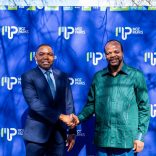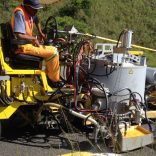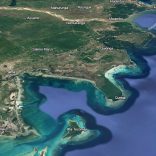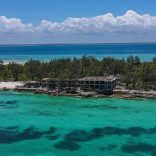Mozambique: At least 5 vehicles seized in Mágoè National Park this year carrying fish below the ...
Government ponders to further increase the cost of fishing in Mozambique

Photo: A Verdade
The Minister of the Sea, Inland Waters and Fisheries announced that the government was considering raising the fees for the right to fish introduced in 2017.]
“We will continue to adjust until we reach the minimum goal of 5 percent royalties on the commercial value of catches made annually,” Agostinho Mondlane said.
@Verdade found that these fees, coupled with a 13-year license review, boosted industry revenues by 171 percent in less than a year. But ship owners and entrepreneurs in the fisheries sector are complaining, albeit quietly.
At his first press conference last Friday (07-12), Minister Mondlane revealed that when he took office, “the contribution in the fisheries sector was about 1 percent of the value of total annual catch and we felt we were charging fees below what is the international practice, which is at least 5 percent in royalties to the owner of the resources – which is the state”.

“In this period we launched a review of the fees charged for fishing licenses both at sea and in inland waters, covering semi-industrial, industrial and artisanal fishermen, and this led to state revenues increasing by about 171 per cent, more than tripling what we collected in 2015,” the minister said.
@Verdade reports that, although the government introduced a new Fisheries Law at the end of 2013, it was never regulated until last year when, on November 21, the Council of Ministers approved the Regulation of the Concession of Fishing Rights and Fisheries Licensing.
The new legislation, which came into force on December 29, 2017 through publication in the official gazette, the Boletim da República, left industrial and semi-industrial fishing entrepreneurs “on the brink of a nervous breakdown”, @Verdade heard from sources close to the process.
The new regulation stipulated, in Article 43, that the fees to be paid for the right to fish in Mozambique would be determined taking into account the market value of the species, the expected volume of catches and the yield of fishing gear used, the fishing zones and the type of vessel used, and even the possible environmental damage that could result from the exercise of the activity.
For industrial fishing, the new fees range from 35,492.40 meticais for bass pair trawl fishery in zone A to 14.4 million meticais for purse-seine tuna fishing by vessels registered abroad.

Meanwhile, semi-industrial ship-owners had to pay fees ranging from 22,182.75 meticais, such as the annual fee for small pelagic fishery with trawl gear, and 1,887,912.50 meticais for Kapenta fishing rights.

Minister Mondlane told reporters that it was the government’s intention “to continue adjusting until we reach the minimum goal of 5 percent of the royalties on the commercial value of the catches made annually.”
Licenses were not reviewed for 13 years
In addition, the government has raised the fishing license fees that were in force since 2004.
Catching our famous prawn cost industrial fishermen only 10,300 meticais a year, revised upwards to 31,340 meticais.
The 3,100 meticais license for the Mozambican king prawn was revised to 6,367 meticais.


Lobster, at 6,400 meticais, rose to 13,145 meticais, but catching lobster with pots was not specified. Neither was shark fishing or deep-sea crabbing with pots.
Artisanal activity does not pay fishing fee
Semi-industrial fishing for surface shrimp was only regulated for the Limpopo river mouth at 100,000 meticais per year (100,000,000 meticais of the former family) and was readjusted to 148,147 meticais. A fishery fee of 158,147 meticais for the Sofala Banks was introduced.
Hand-line fishing cost 2,100 meticais south of the Save River and 1,800 meticais north of the Save, revised to 110,908 and 96,531 meticais respectively.

Kapenta fishing at the Cahora Bassa Reservoir cost only 22,900 meticais and was increased to 100,000 meticais.
Artisanal fisheries, which accounts for 92 per cent of all fishing in Mozambique, are not subject to pay for the right to fish but have seen the November 2004 cost of licenses readjusted.

By Adérito Caldeira












Leave a Reply
Be the First to Comment!
You must be logged in to post a comment.
You must be logged in to post a comment.